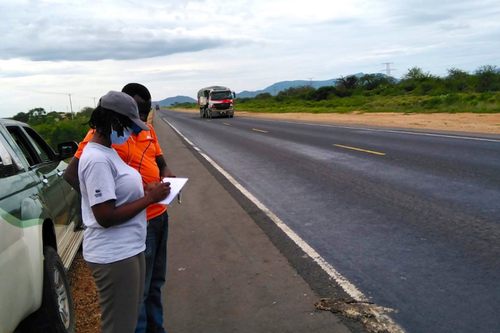First comprehensive study of wildlife roadkill in Tsavo, Kenya identifies hotspots, affected species

The Tsavo Conservation Area along the Mombasa-Nairobi highway in Kenya is a hub of biodiversity in the region, containing multiple national parks in the eastern part of the country. It is also bisected by a major highway and railways that connect the port of Mombasa to the interior area.
In a recent study published in Heliyon, researchers from the University of Minnesota and Kenya Wildlife Service recorded wildlife roadkill in the Tsavo Conservation Area over an 11-year period —from 2007 to 2018 — providing the first major assessment of direct mortality of animal species along Kenya’s primary infrastructure corridor. The area was intriguing as one of the largest protected areas in Kenya and a stronghold of the country’s elephant population.
“Most roadkill studies have focused on wildlife in developed countries and temperate habitats, but there are limited data available on the impact of roads on wildlife in the African tropics, especially where road infrastructure development is projected to grow rapidly in natural environments and conservation areas,” said Fredrick Lala, the study’s lead author, a researcher for Kenya Wildlife Service, and PhD student at the University of Minnesota in Associate Professor Joseph Bump’s lab.
“This study provides the first major assessment of direct mortality of animal species along Kenya’s primary infrastructure corridor.”
At least monthly, a team from Kenya Wildlife Service monitored nearly 165 km of roadway, of which 65 km forms a boundary between Tsavo East and Tsavo West National Parks. The remaining section, about 96.93 km, consists of road abutting Tsavo East to the north and private ranches or wildlife sanctuaries to the south.
Roadkill monitoring documented species of concern, including the critically-endangered Taita thrush, the endangered African wild dog, and threatened elephants. Roadkill associated with elephants and buffalo were also usually associated with vehicle damage, which carries a high risk of human mortality during such road accidents.
“Identifying roadkill hotspots is key to understanding the effectiveness of mitigation strategies, such as underpasses, vegetation management, and signage,” said Lala. ““We also mapped the spatial distribution of roadkill, which was most closely associated with the stretch of road between the Tsavo parks, adjacent shrub vegetation and proximity to permanent and seasonal rivers.”
In total, 1,436 roadkill were recorded, with the 53% being small to medium sized mammals (<15kg). Birds comprised 32%, reptiles 10%, and 5% were large mammals (>15kg). Of the 460 birds recorded, 264 were identifiable and represented by 62 species. Ten species of large mammal were identified, including the elephant and the endangered African wild dog. Thirteen species of small mammal were also identified, dominated by Kirk's dik-dik. Reptiles were represented by 11 species.
“Kenya is a country renowned for its wildlife and studies such as this help to balance between infrastructure development and wildlife conservation,” said co-author Erustus Kanga, Wildlife Secretary at the Ministry of Tourism and Wildlife Kenya.
Additional findings discovered roadkill was lowest on road sections that traversed settled areas, as opposed to roads adjacent to the protected areas. It also appeared to be more evenly distributed along the highway during the wet seasons, and more clustered during the dry seasons for all the species.
“Ultimately, these findings indicate a need— and opportunity— to limit further road mortality of these species,” adds Lala. “With this study, we have the information on where to create underpasses in case of future highway expansion within Tsavo, which could prove safer for surrounding wildlife.”
- Categories:
- Agriculture and Environment





